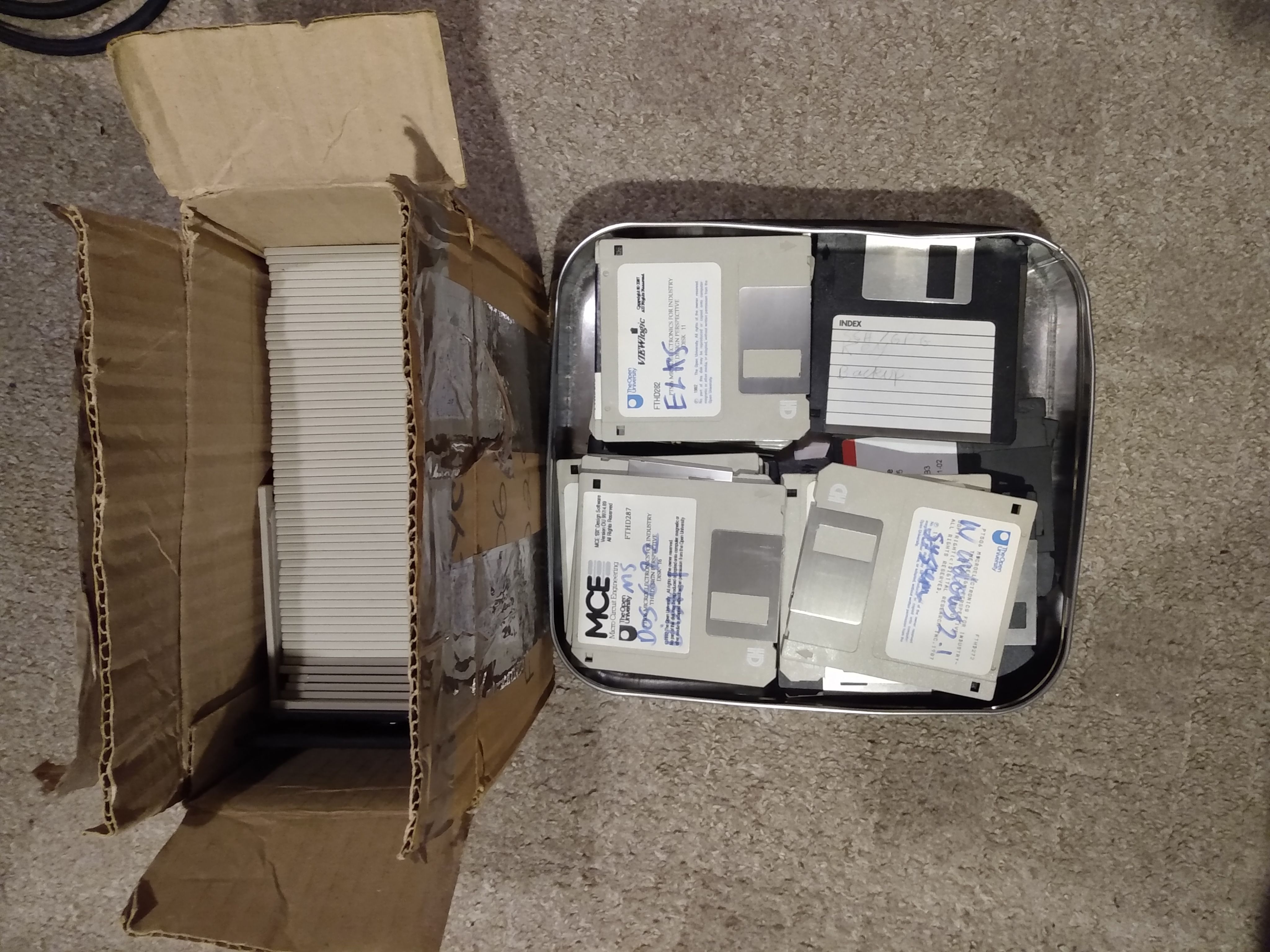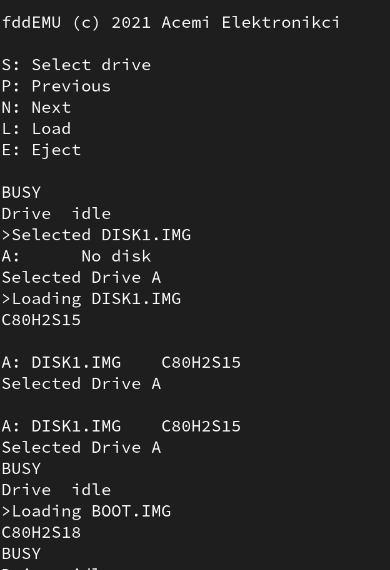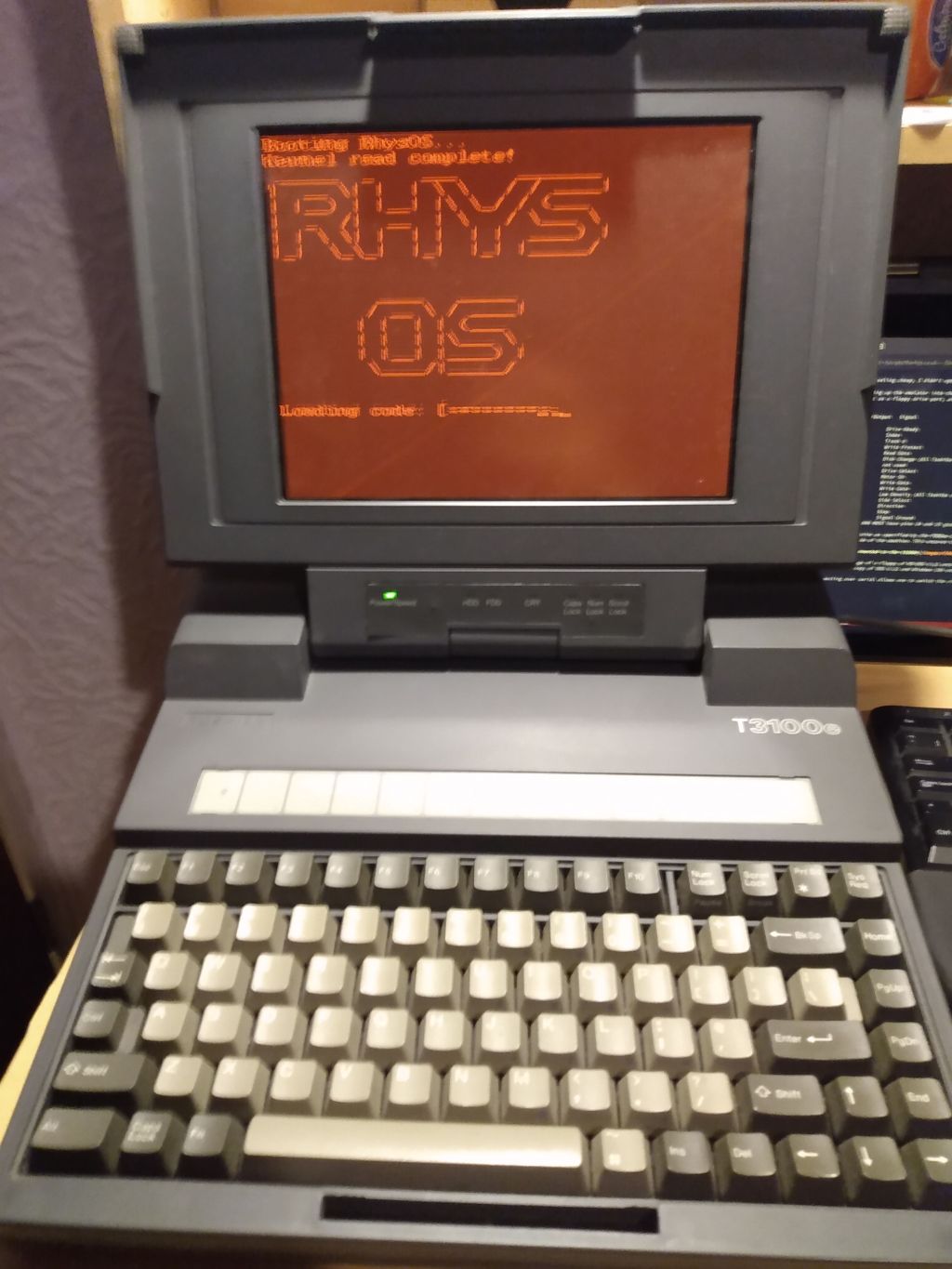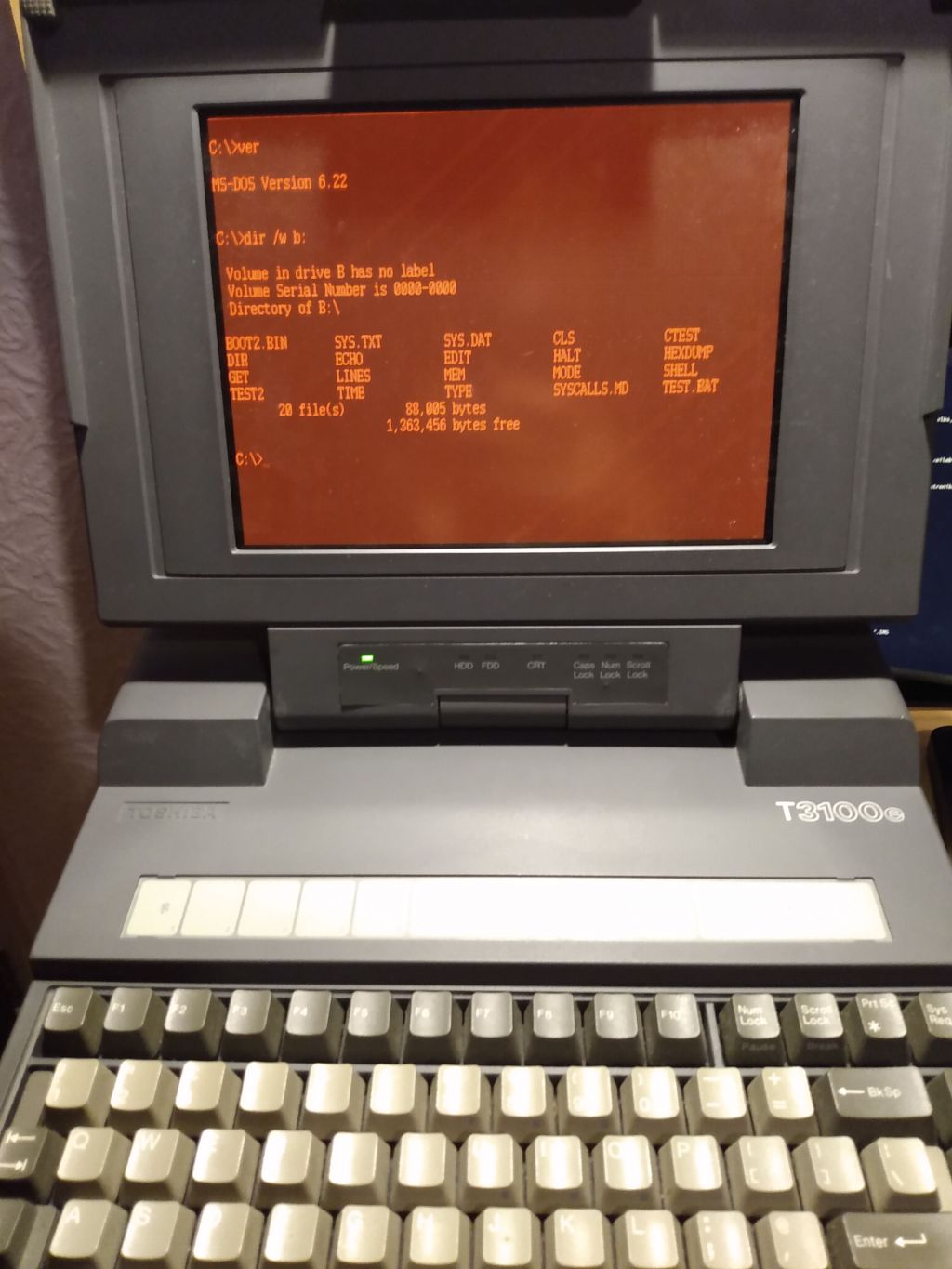Emulating a floppy drive with an Arduino
Recently, I've been installing a bit of software on my Toshiba t3100e. Whilst I bought quite a few floppy disks, it's still a hastle for me to write multiple disks for each software package.
I've known about the FloppyEmu for a while, but at over £100 it was a bit more than I could afford.
Whilst looking for alternatives, I stumbled across FDDEmu, which allowed me to emulate a (slightly slow) floppy drive with my existing Arduino uno.
Because I was feeling cheap, I didn't opt for the optional OLED screen, but instead enabled serial mode to control the emulator via another computer over USB.
Instead of wiring up the emulator into the internal floppy header of the t3100e, I opted to use the external floppy drive port which is included in this model. This enables one to use the parallel port as a floppy drive port, with the following pinout:
PIN Input/Output Signal
1 I Drive Ready
2 I Index
3 I Track 0
4 I Write Protect
5 I Read Data
6 I Disk Change (All Toshiba computers except T1000, T1100 Plus, T1200)
7-9 not used
10 O Drive Select
11 O Motor On
12 O Write Data
13 O Write Gate
14 O Low Density (All Toshiba computers except T1000, T1100 Plus, T1200)
15 O Side Select
16 O Direction
17 O Step
18-25 Signal Ground
(T1000 MUST have pins 24 and 25 grounded)
I wired the Arduino as specified by the FDDEmu Github repo to a DB-25 breakout board and plugged it into the parallel port of the t3100e, making sure to select "A" on the port switcher switch on the side of the machine. This ensures the emulator is drive A and the internal drive is B.
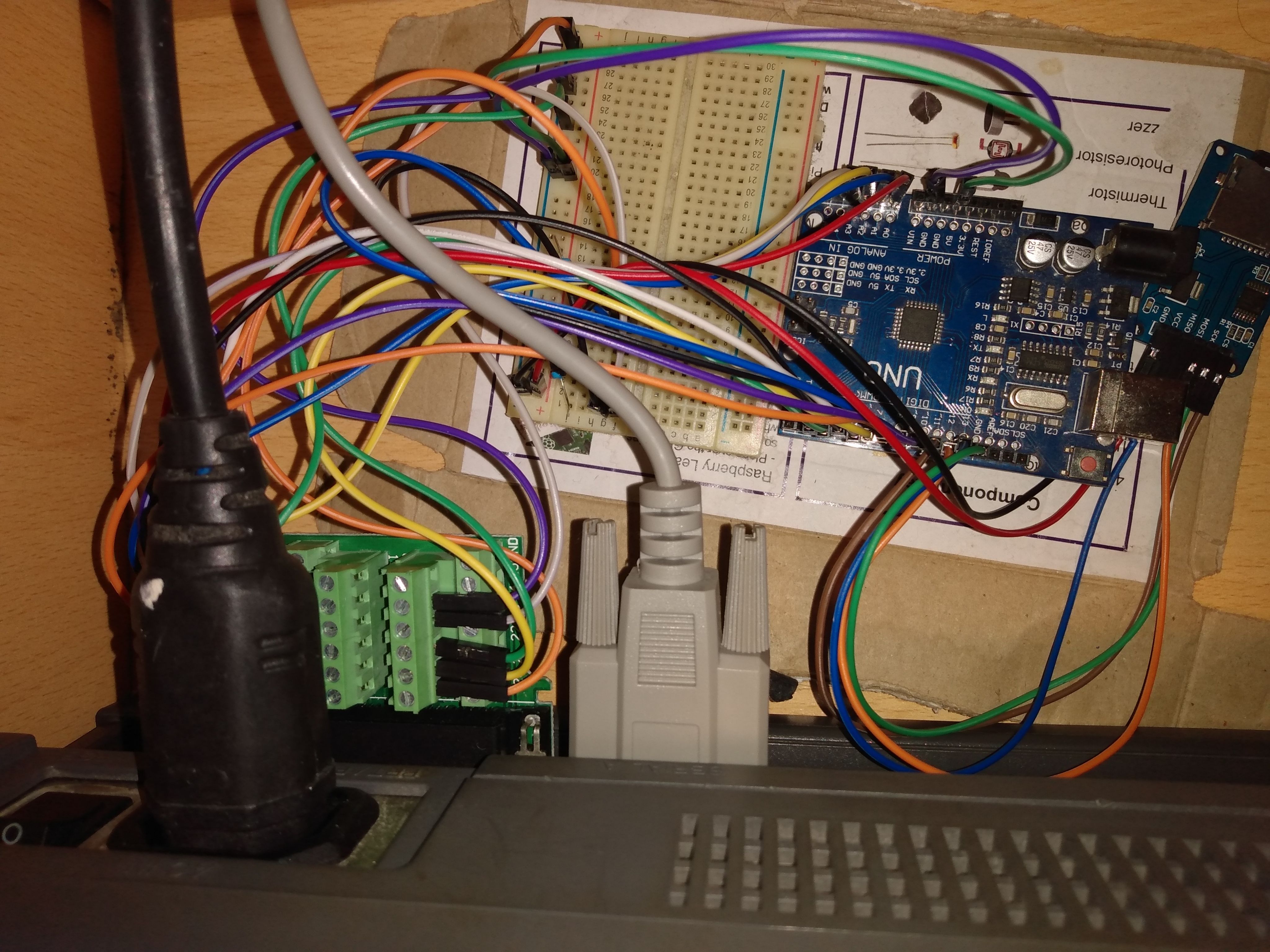
I copied an image of a floppy of MS-DOS 6.22 onto the sd-card as "boot.img", and the 3 5¼" floppies for the Windows 286 installed onto the SD card, and booted. This allowed me to install a fresh copy of DOS 6.22 and Windows 286 onto my machine, all from an SD card.
Connecting over serial allows one to switch the virtual drive between the disk images on the root of the SD card through a simple to use interface:
Here is an example of booting RhysOS, then listing the directory in DOS after changing the drive from A to B:
All together, this emulator only cost around £20, with the Arduino itself costing £10 of that, which is a large saving over the Floppy Emu.
